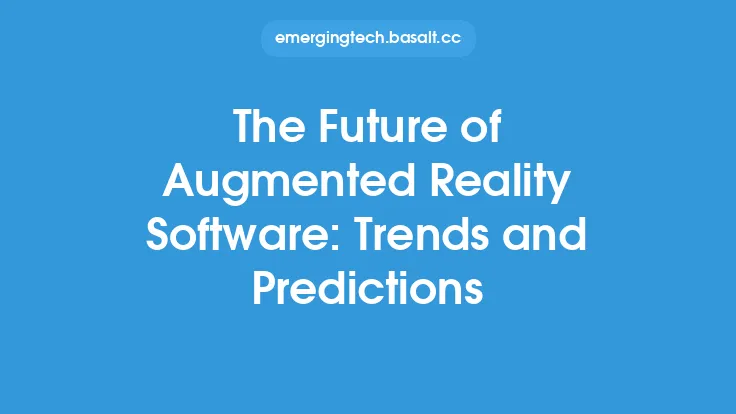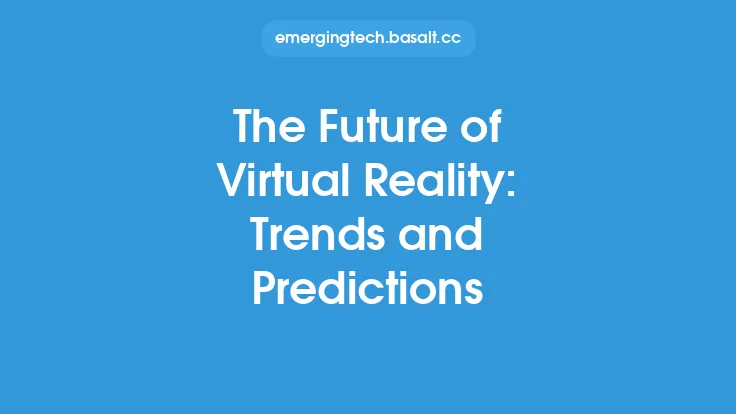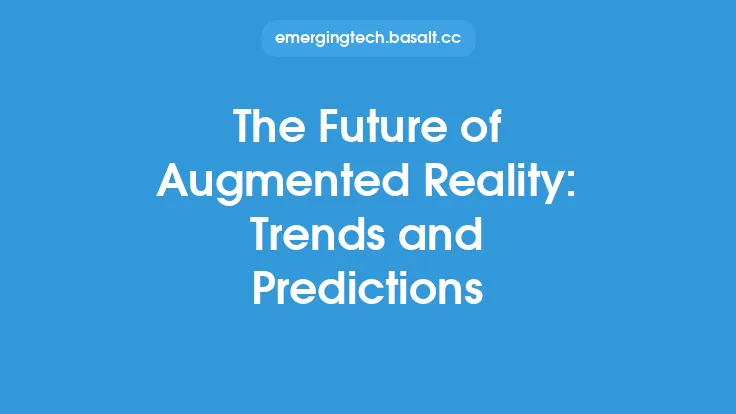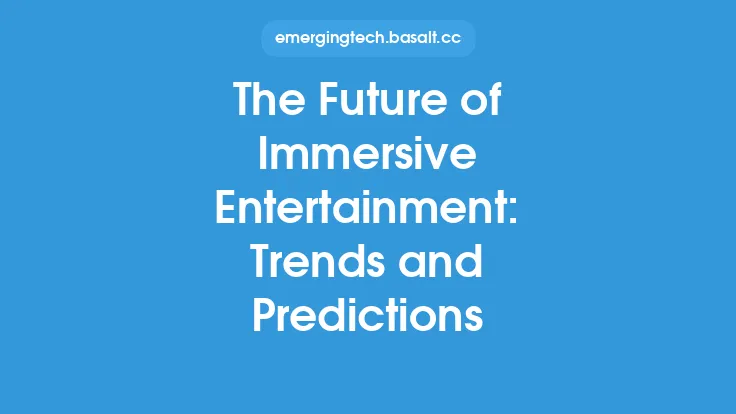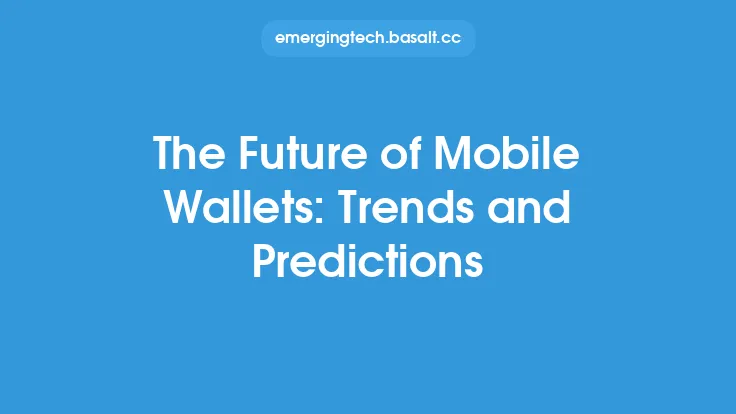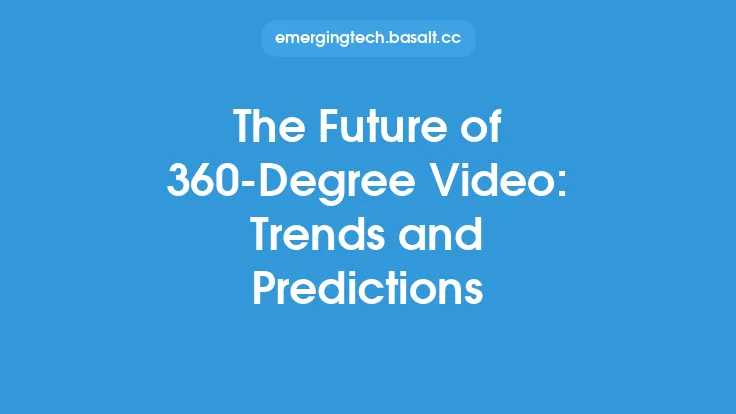The concept of mixed reality (MR) has been gaining significant attention in recent years, and its potential to revolutionize the way we interact with the world is vast. As a blend of virtual reality (VR) and augmented reality (AR), MR combines the best of both worlds to create a seamless and immersive experience. In this article, we will delve into the future of mixed reality, exploring the trends and predictions that will shape the industry in the years to come.
Introduction to Mixed Reality Trends
Mixed reality is poised to become a major player in the tech industry, with its applications spanning across various sectors, including entertainment, education, healthcare, and more. One of the primary trends driving the growth of MR is the advancement of display technologies. The development of high-resolution, see-through displays, such as holographic displays and light field displays, is enabling the creation of more sophisticated and realistic MR experiences. These displays are capable of projecting high-quality images and videos onto real-world environments, blurring the lines between the physical and digital worlds.
Advancements in Tracking and Mapping Technologies
Another significant trend in MR is the improvement of tracking and mapping technologies. These technologies enable MR devices to accurately track the user's movements and map the environment, allowing for a more immersive and interactive experience. The development of inside-out tracking, which uses cameras and sensors to track the user's movements, is particularly noteworthy. This technology eliminates the need for external sensors or markers, making MR experiences more accessible and convenient. Furthermore, the advancement of simultaneous localization and mapping (SLAM) algorithms is enabling MR devices to create detailed maps of the environment, allowing for more precise tracking and interaction.
The Role of Artificial Intelligence in Mixed Reality
Artificial intelligence (AI) is playing an increasingly important role in the development of MR. AI-powered algorithms are being used to enhance MR experiences, enabling more realistic and interactive simulations. For example, AI can be used to generate realistic environments, characters, and objects, creating a more immersive experience. Additionally, AI-powered chatbots and virtual assistants are being integrated into MR experiences, allowing users to interact with virtual objects and environments in a more natural and intuitive way. The use of machine learning algorithms is also enabling MR devices to learn and adapt to user behavior, providing a more personalized and engaging experience.
Cloud Rendering and Streaming in Mixed Reality
Cloud rendering and streaming are becoming essential components of MR, enabling the delivery of high-quality, graphics-intensive experiences to a wide range of devices. Cloud rendering allows MR experiences to be rendered in the cloud, reducing the computational requirements of local devices. This enables MR experiences to be accessed on lower-end devices, such as smartphones and tablets, making them more accessible to a wider audience. Cloud streaming, on the other hand, enables MR experiences to be streamed directly to devices, eliminating the need for local rendering and storage. This technology is particularly useful for MR experiences that require high-bandwidth and low-latency connectivity, such as remote collaboration and virtual training.
The Impact of 5G Networks on Mixed Reality
The rollout of 5G networks is expected to have a significant impact on the development and adoption of MR. 5G networks offer faster data transfer rates, lower latency, and greater connectivity, enabling the delivery of high-quality MR experiences to a wide range of devices. The increased bandwidth and reduced latency of 5G networks will enable MR experiences to be more immersive and interactive, with faster loading times and more seamless interactions. Additionally, the greater connectivity of 5G networks will enable more devices to be connected, creating new opportunities for remote collaboration, virtual training, and other MR applications.
The Future of Mixed Reality Hardware
The development of MR hardware is rapidly evolving, with new devices and technologies being announced regularly. One of the most significant trends in MR hardware is the development of standalone head-mounted displays (HMDs). These devices are self-contained, eliminating the need for external computers or devices. Standalone HMDs are more convenient and accessible than traditional HMDs, making them more appealing to a wider audience. Additionally, the development of MR-enabled smartphones and tablets is enabling more users to access MR experiences, without the need for dedicated hardware.
Mixed Reality and the Internet of Things
The integration of MR with the Internet of Things (IoT) is expected to have a significant impact on the development of smart cities, homes, and industries. MR can be used to enhance the interaction between users and IoT devices, creating a more intuitive and immersive experience. For example, MR can be used to visualize and interact with IoT data, such as sensor readings and device status. Additionally, MR can be used to control and manipulate IoT devices, creating a more seamless and interactive experience. The integration of MR with IoT is expected to enable new applications and use cases, such as smart home automation, industrial monitoring, and urban planning.
The Potential of Mixed Reality in Revolutionizing Industries
MR has the potential to revolutionize a wide range of industries, from entertainment and education to healthcare and manufacturing. In the entertainment industry, MR can be used to create immersive and interactive experiences, such as virtual concerts and theme park attractions. In education, MR can be used to create interactive and engaging learning experiences, such as virtual labs and field trips. In healthcare, MR can be used to enhance patient care and treatment, such as virtual therapy and surgery simulation. In manufacturing, MR can be used to enhance production and quality control, such as virtual training and inspection.
Conclusion
In conclusion, the future of mixed reality is exciting and full of possibilities. With the advancement of display technologies, tracking and mapping technologies, and AI, MR is poised to become a major player in the tech industry. The integration of MR with cloud rendering and streaming, 5G networks, and IoT is expected to enable new applications and use cases, revolutionizing a wide range of industries. As MR continues to evolve and improve, we can expect to see more sophisticated and immersive experiences, enabling users to interact with the world in new and innovative ways. Whether it's in entertainment, education, healthcare, or manufacturing, MR has the potential to transform the way we live, work, and interact with each other.
